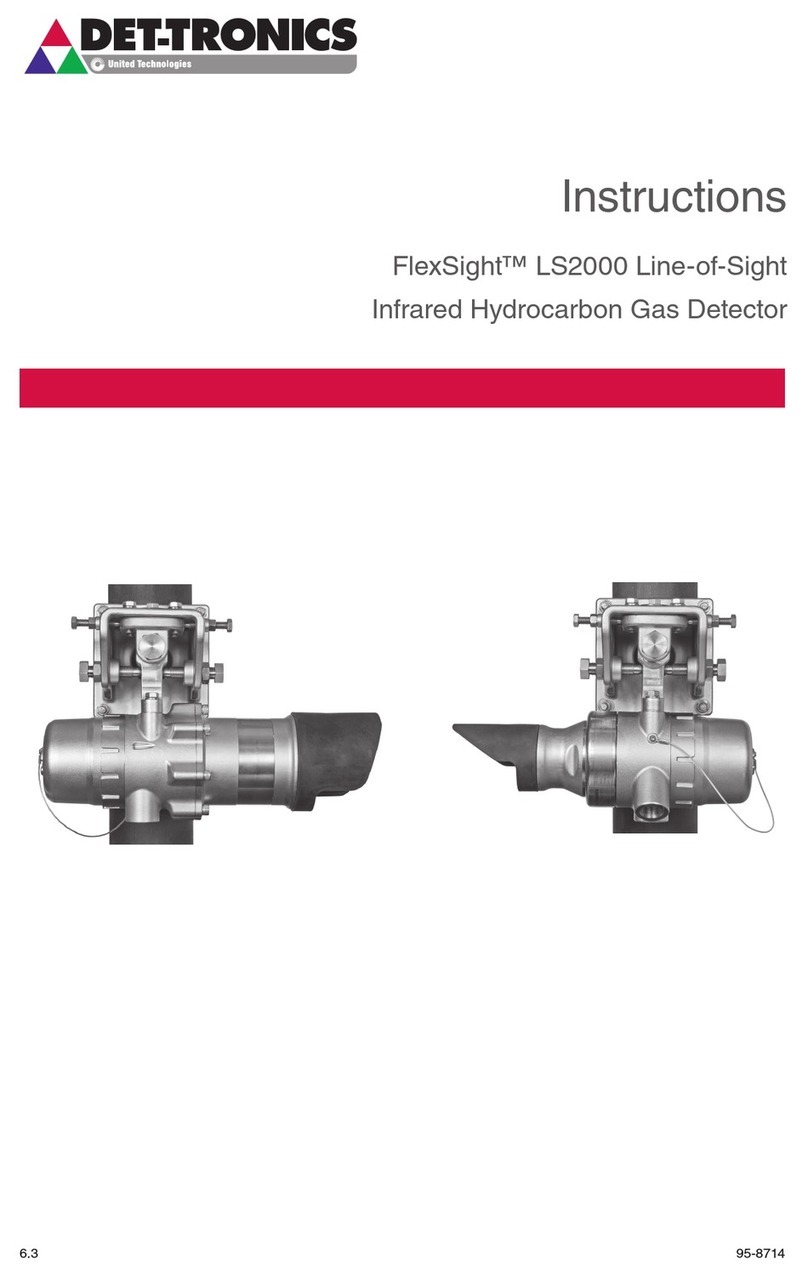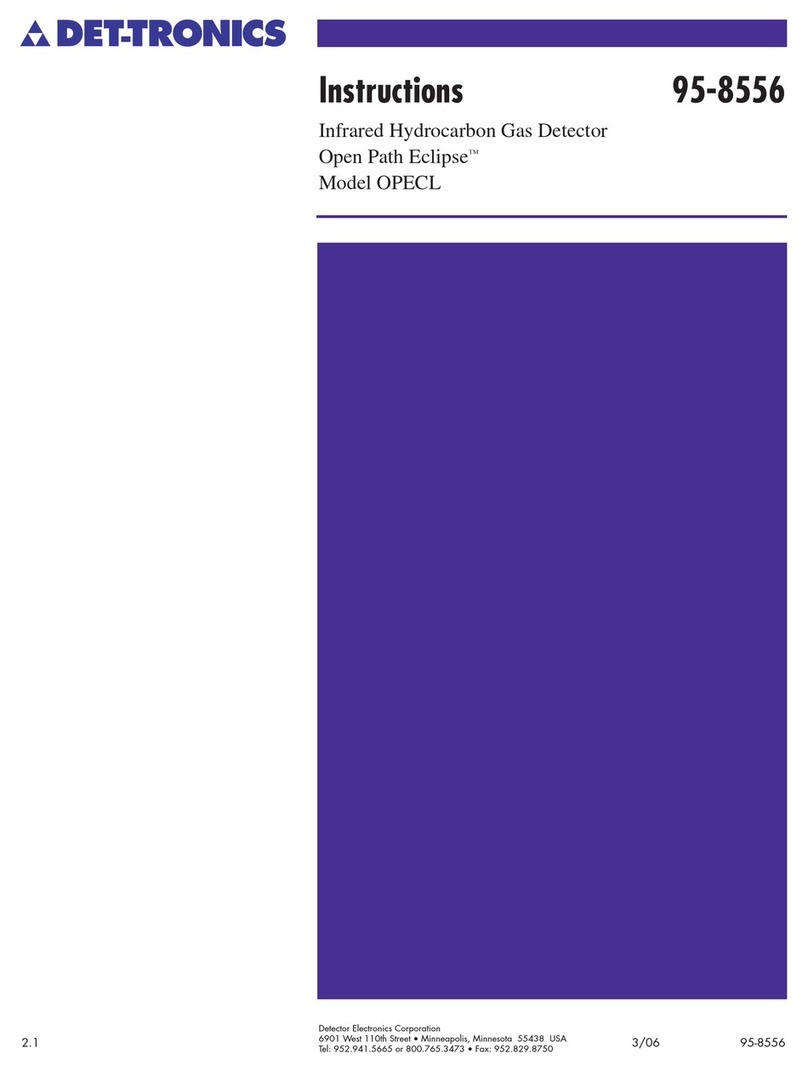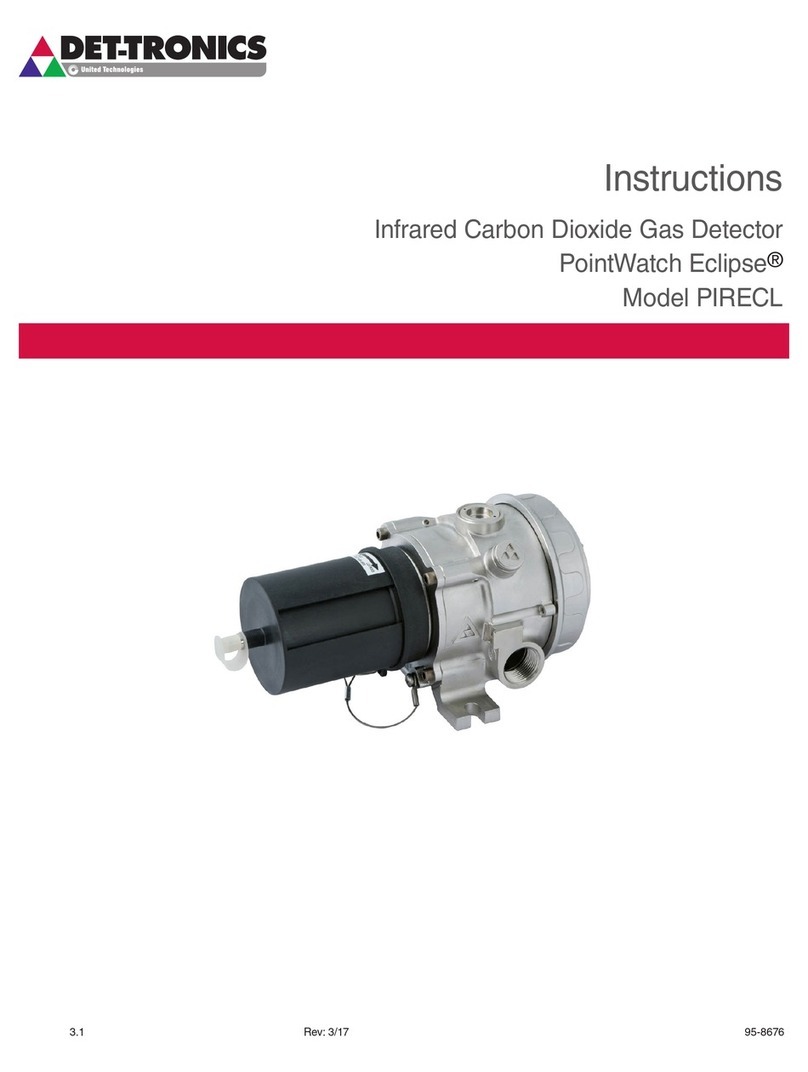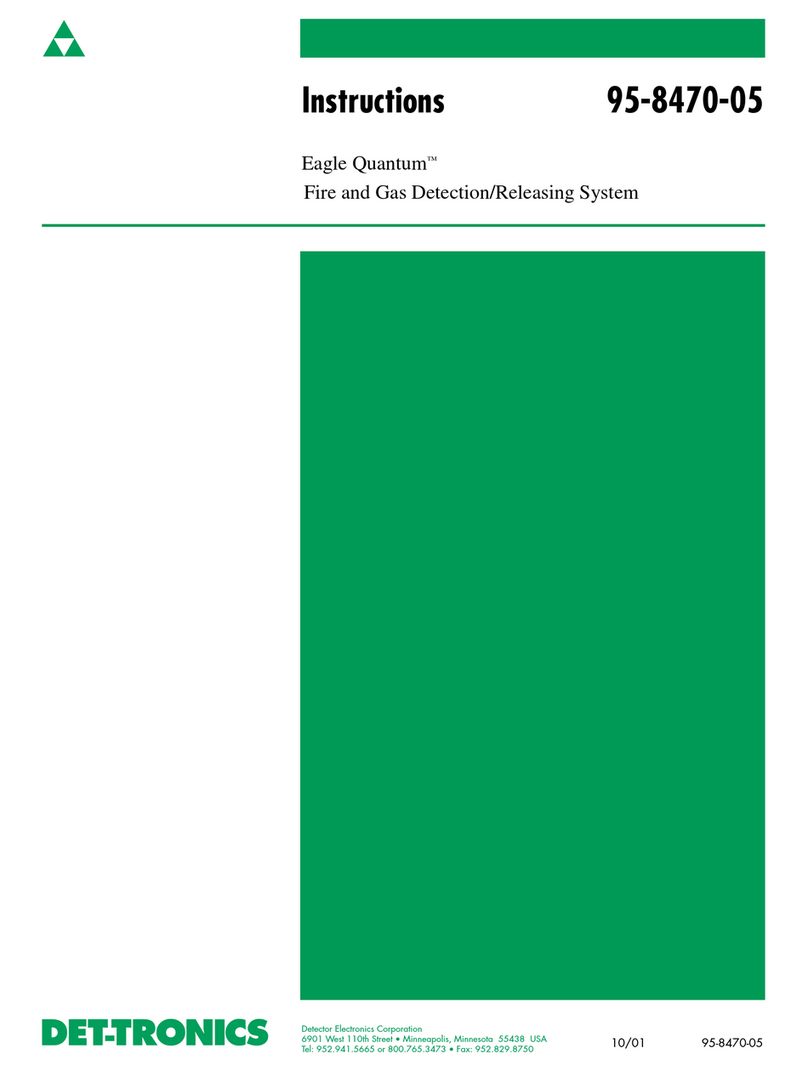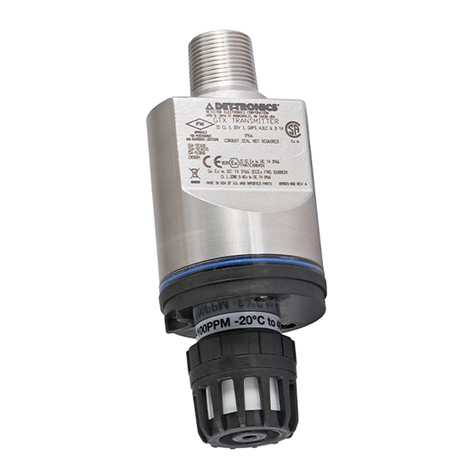
1. 2 95-87274
Common Misuse Scenarios
• Do not install the LS2000 on unstable or vibration
prone structures; a 3 meter maximum height is
recommend when using a vertical post.
• DonotinstalltheLS2000belowtheheightoftypical
human activity unless absolutely necessary in order
to prevent nuisance beam block faults.
• Do not install the LS2000 receiver where multiple
transmitters are in the line of sight - this is a common
concern for pipeline system installations.
NOTE
Theabovecommonmisusescenarioswillcause
the LS2000 to annunciate a fault if the condition
is severe enough to compromise the safety
function.
START-UP AND COMMISSIONING
Commissioning Personnel
The Safety Certified LS2000 gas detector can be
commissioned by any qualified person with knowledge
of gas detection instruments and the configuration
device being used. Refer to the Start-Up, Alignment
and Calibration sections provided in the LS2000
instruction manual.
Conguration
Digital communication with the LS2000 is necessary
to monitor internal status and to modify the factory
settings. Appendix D of the LS2000 instruction
manual provides guidance on establishing HART
communication, and describes the communication
menustructurewhenusingtheLS2000withtheHART
HandheldCommunicator.
NOTE
Prior to device conguration (setting alarm
thresholds, latch/non-latch function, etc.) all
alarm outputs must be bypassed. The device is
not safety certied during conguration change
activities.
Relay Conguration Requirements
TheLS2000gasdetector’sLowAlarm,HighAlarmand
Fault relay outputs may be used as part of a Safety
Certified system. The end user must provide transient
and current limiting on the output contacts of the relays.
The maximum relay contact output must be limited to
5 amperes at 30 Vdc. The load must be a resistive
load. The user must protect against transients by using
standard protection methods such as proper grounding
of shielded wire and separation of relay load wires from
other lines carrying rapidly switched high current (e.g.
large motor power supply lines).
Conguration Protection
Upon completion of installation and commissioning,
it is recommended to password-protect the LS2000
programming and setup function using a HART Field
Communicator or AMS program to prevent accidental
or deliberate change of detector configuration data
during normal operation.
OPERATION, MAINTENANCE, INSPECTION AND
PROOF TESTING
All normal installation, start-up, and field calibration
recommendations as documented in the STARTUP
section of the LS2000 instruction manual are applicable
to the Safety Certified LS2000 gas detector.
Safety-Certified LS2000 gas detectors require
additional Proof testing to be performed in all cases.
Personnel performing Proof Test procedures shall be
competent to perform the task. All proof test results
must be recorded and analyzed. Any corrective actions
taken must be documented in the event that an error is
found in the safety functionality. The Proof tests must be
performed at a frequency as shown in Table 1.
WARNING
Failure to perform the specied testing and
inspectionmaylowerorvoidtheSILratingforthe
product or system.
LS2000 Proof Test Name Commissioning Frequency per Year
Gas Response Proof Test Ye s 1
Output Response Proof Test Ye s 1
Table 1—Frequency for Performing Proof Tests
